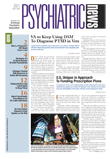In the midst of high-profile efforts to change the recently instituted Medicare drug benefit, the policies of other industrialized nations may provide previews of the impact that changes could produce.
Approaches to publicly subsidized prescription drugs in other countries differ in important ways from those in the United States—most allow access to fewer drugs but cover more people than the approach used by the United States, according to health policy experts from Europe, Canada, and Australia who provided a briefing to congressional staff on the issue in June.
Among the major differences between the U.S. approach, which subsidizes drug coverage for about 43 million elderly and disabled, and those of other industrialized countries is that most other nations consider the comparative effectiveness of medicines sold in those markets when deciding what to include in their formularies.
“Without rigorous evaluation [by a third party] the drug industry inevitably will be dominated by marketing,” said Steven Morgan, an assistant professor in the Department of Health Care and Epidemiology at the University of British Columbia.
He pointed out that 13 percent annual growth in per-capita drug expenditures by Americans since 1995 coincided with huge increases in direct-to-consumer advertising. Such advertising increased from less than $500 million in 1995 to more than $4 billion in 2005.
Drug spending per capita in Canada, which bans such marketing, has increased much more slowly than it has in the U.S. market since the mid-1990s.
The leading U.S. drug-assessment initiative, the Drug Effectiveness Review Project (DERP), conducts regular systematic reviews of evidence of the comparative performance of drugs within leading therapeutic classes. DERP is sponsored by a group of 15 state governments and two private health care groups; it evaluates competing drugs but does not make recommendations for drug coverage. Such reviews could be more effective, Morgan said, if their results were incorporated into the drug-appraisal process and the coverage policies of major private and public prescription plans.
Transparency Missing in U.S.
At the heart of such reviews in other countries is an attempt to create transparency in the price-setting process. Critics of the U.S. drug market in general, and Part D in particular, say there is little publicly available information to explain why particular drugs are sold at particular prices by their manufacturers.
In a response to the international experts, Mark Hayes, Republican health policy director for the Senate Finance Committee, pointed out that several transparency provisions were in the Senate-passed version of the legislation that created the drug benefit but were stripped out after opposition from the House.
“There is tremendous amount of opposition to this from the drug industry,” said Cybele Bjorklund, Democratic staff director of the House Ways and Means Committee.
National Formularies Weighed
Although Australia and New Zealand use national formularies, the approach varies in other industrialized nations. England uses a negative formulary of drugs that the government drug program will not cover, while Canada has many local drug formularies.
National prescription-drug plans in much of Europe have added so-called demand-side efforts in recent years to encourage physicians and pharmacists to help control prices through measures such as increased use of generic drugs. Such efforts have had limited success because Europeans have been reluctant to adopt them, said Panos Kanavos, Ph.D., a research fellow at the London School of Economics and Political Science.
Proponents of a national drug formulary created by the federal government cite data that U.S. drug costs are among the world's highest, but those claims were questioned by several researchers. Such price comparisons, Kanavos said, usually omit a range of discounts that manufacturers offer to U.S. insurers that purchase in large volume.
“The United States has done a better job of keeping a discount in the system,” Kanavos said.
Critics of the Part D program have urged that the national formulary used by the Department of Veterans Affairs (VA) be applied to Medicare. A Families USA review compared Part D drug prices with prices negotiated by the VA and found that every drug compared was less expensive in the VA system, with a median price difference of 46 percent.
The Families USA report, said Hayes, does not account for the fact that the VA system achieves lower prices by mandating a mail-order system, while Part D participants can use local pharmacies. In addition, drugs not covered under the VA plan are simply unavailable, whereas Part D recipients can switch to a plan that will cover a drug they need.
A recent proposal by congressional Democrats would change the Medicare Part D program so that one drug-plan option would be administered by the federal government. That change would allow the government to negotiate drug prices on behalf of Medicare recipients. Democrats argue that such an approach would allow the government to get better prices because it could buy on a massive scale.
Such a change would mimic, in part, the drug systems of Australia and New Zealand, where the government plans fund virtually all medicines and give the governments “significant buying power... to negotiate acceptable pricing with suppliers,” Morgan said.
The U.S. drug benefit depends on market forces to drive down prices through the competition of a large number of insurers to gather the most Medicare beneficiaries into their plans.
More information on international efforts to provide drug benefits is posted at<www.allhealth.org/event_062306.asp>.▪
